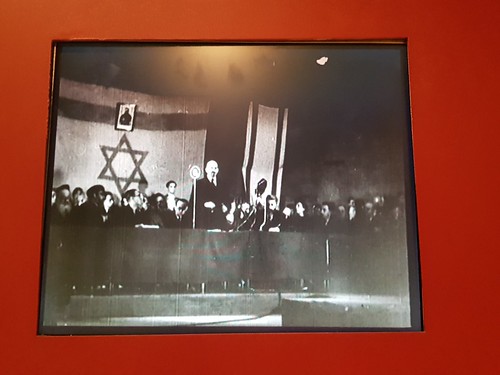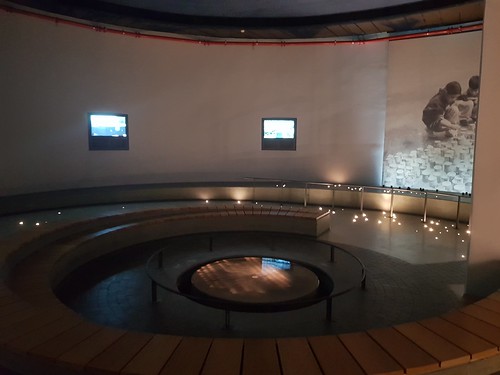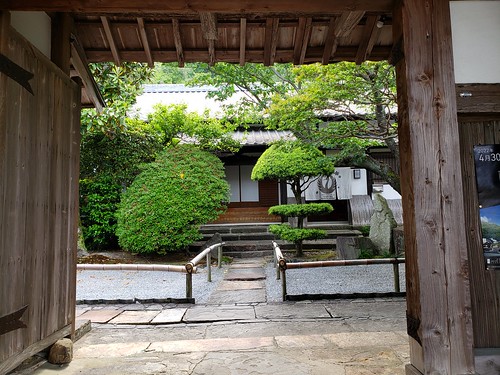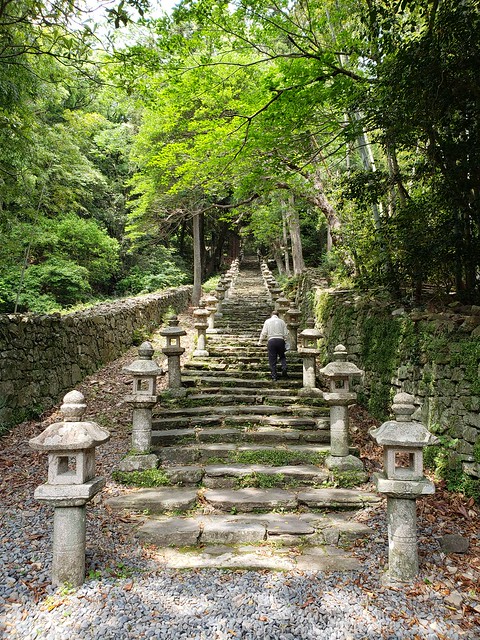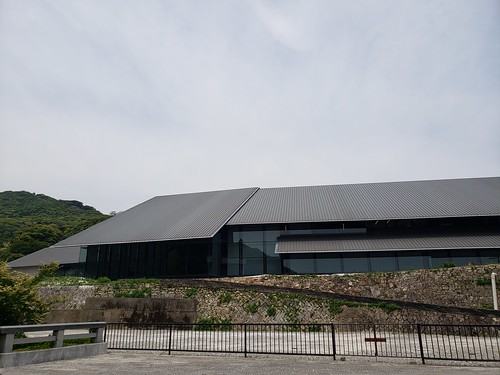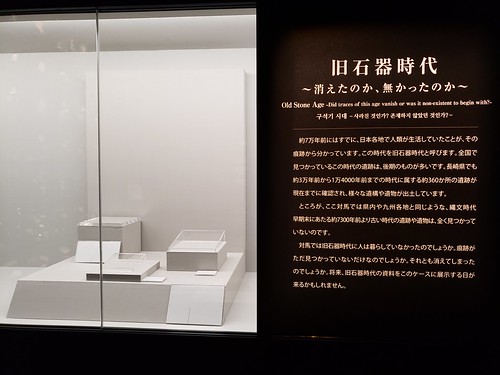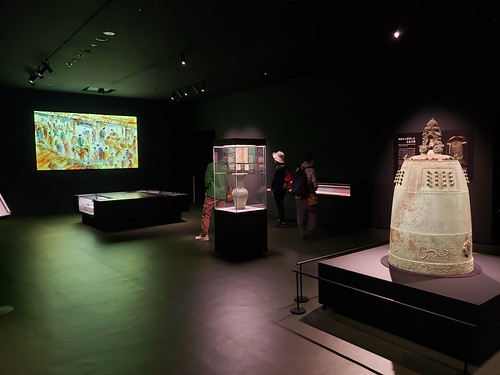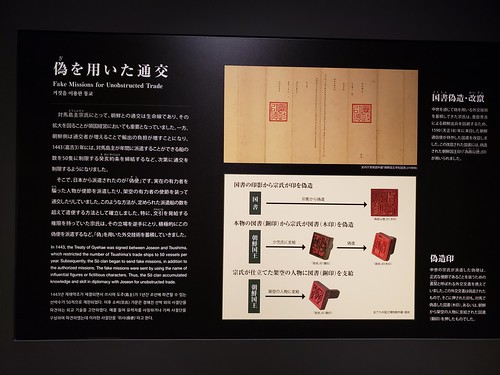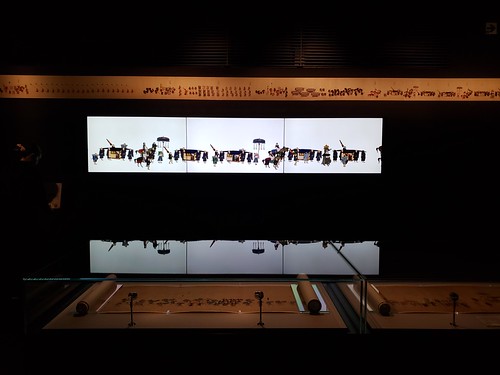Having finally finished with my posts on last summer’s stay in Turkey, I can move on to some of the other travels I was privileged to engage in this past year. In late November, I traveled to London to present at a conference, and jotted down the following notes/thoughts.
11/29/18
These last few days in London have been just wonderful. I guess maybe I don’t quite remember my last few trips to London too clearly (though I could just look them up in the blog), but somehow I think that maybe this time I’ve really felt that feeling of being able to come back, and wanting to come back.
 Scones and tea at Gail’s Bakery in Exmouth Market. Sometimes the simplest things are the greatest highlights of a trip.
Scones and tea at Gail’s Bakery in Exmouth Market. Sometimes the simplest things are the greatest highlights of a trip.
I think getting my SOAS Alumni card made a big difference. I don’t know why I never tried to look into that possibility earlier. Having a card and being able to go in and out of the campus as I wished, and to use the library, as well as meeting up with one of my SOAS professors from many years ago not in an intimidating student-teacher sort of way but in a laidback, friendly, collegial sort of way, really helped I think. It made me feel welcome and to feel like I have a place here (that is, on previous trips perhaps I felt like SOAS was no longer a place for me, no longer a place where I belonged). Meeting up with (just a very few) friends and professors, even though I didn’t really get out into the city all that much, and certainly didn’t really do any super extensive touristy exploring or anything, I dunno, somehow I just really felt like I was on top of things, knew what I was doing for a change. By which I mean to say, yes, I did have a ton of false starts, wasted a lot of time going to the British Library only to find I couldn’t get anything done there, walking around looking for a cafe or restaurant that suited what I was in the mood for at that time, only to end up at a Cafe Nero, but, still, overall, I feel like I settled in, however briefly, to a routine, to a life, as if I were to be staying here longer. I visited a few museums, went out to a few restaurants, but also spent some considerable time just walking around or sitting in UofL student spaces, having a drink or a sandwich and getting a little work done, not feeling too out of place.
 The Junior Common Room (JCR) at SOAS.
The Junior Common Room (JCR) at SOAS.
SOAS is an interesting place. Many of the students – or, at least the ones who most make themselves heard – are super activist liberal, to an extent that often rubs me the wrong way. Crazy ideological, without the nuance and complexity that comes with further age and experience.
But at the same time, it is so inspiring and interesting to be in a place where everyone around you is a non-Western specialist. Where people are actively and passionately engaged in studying everything from Kurdish language to Senegalese music to Burmese politics to Tongan economics. Where the entire library and not just some corner of it, is organized into Africa, Asia, Pacific, etc. And where most of the signs and flyers on the walls, and the books in the bookstore, are non-western, decolonial, culturally oriented, with true serious diversity unlike you ever see in a US institution’s library. Incidentally, SOAS Library is currently being threatened by terrible budget cuts. See here for information on the latest developments, and on what you can do to help.
 Opening slide for a wonderful presentation by Gaylen Vankan, on a 1526 series of depictions of Turkish (Ottoman) warriors on horseback.
Opening slide for a wonderful presentation by Gaylen Vankan, on a 1526 series of depictions of Turkish (Ottoman) warriors on horseback.
The Perceiving Processions symposium I was in London to attend was wonderful. I suppose that in the end I am afraid I must admit that, as almost always is the case, I sadly did not actually come away with any new insights, new methodologies, that might truly inform my research/writing going forward. I had hoped for some new insights into how we talk about processions as performative acts, as acts that actually function in some fashion to make meaning through the unique qualities of processions as a particular form of display and action. But, nevertheless, it was a lot of fun, met a lot of great people, and got some surprisingly interested excited reactions. I half expected that as the only East Asianist on the docket, people would largely just ignore me, taking my work as a curiosity but as something outside of the much deeper, more involved and engaged conversations they would want to have with one another, with their fellow Europeanists. But during the first coffee break after my talk, and to a certain extent throughout the entire rest of the day, multiple people kept wanting to talk to me, which was really something. Many of the other presentations were also really interesting, working on really interesting topics, with beautiful or otherwise really engaging sources.
One on a series of tapestries depicting Congolese royalty as Brazilian kings, in a sort of pastiche of Dutch Brazilian tropical Empire – I had no idea that there was a Dutch Brazil, or that Congolese courts or polities sent any kind of formal embassies. Not to mention the fact that the only place where this set of tapestries is still displayed in full, in order, is at the Knights of Malta Council Chamber, on Malta. The incredible degree of internationality of these topics is stunning.
Matthew Gin presented on rituals in which a Spanish princess was sent over to France to marry a French prince – a tiny island in a river between Spain and France still remains today shared between the two countries. And at that time, temporary ceremonial buildings were erected, to receive the Spanish princess and to convey her into her new life in France in a manner which ceremonially treated both countries as equals. Neither the Spanish nor the French side of the building was larger than the other, or raised up higher, or anything like that – in order to help ensure ritual equality between the two sides. As an architectural historian, he found records of these temporary buildings and reconstructed some notion of the effects or implications of that design, as well as considering the ceremony itself, though he has no pictorial representations at all of those ceremonies or their associated processions. Interesting too, that he noted that even as these Spanish princesses went and took on roles/positions within the French court, they were always considered foreigners, “of Spain,” and thus took on an identity much like the island itself – ambiguous and in-between, not fully belonging to either country.
 Visit of Albrecht Dürer in Antwerp in 1520, Jan August Hendrik Leys, 1855, Royal Museum of Fine Arts Antwerp, 2198. Image courtesy Wikimedia Commons.
Visit of Albrecht Dürer in Antwerp in 1520, Jan August Hendrik Leys, 1855, Royal Museum of Fine Arts Antwerp, 2198. Image courtesy Wikimedia Commons.
Another presenter, Gaylen Vankan of the University of Liege, spoke of Dutch depictions of Ottoman riders, specifically Suleiman the Magnificent and several other figures on horseback accompanying him. Though often grouped together as a procession, these can also be taken to be five separate images of separate classes of Ottoman riders. The key point he made, which I thought was interesting, is that even as one would expect in the late 15th and 16th centuries that Europeans would see the Ottomans as a horrible, barbaric, non-Christian horde, a serious threat to Christendom (and that’s putting it mildly, even, considering the fall of Constantinople and the fall of so much of the Balkans to the Ottomans, all the way to the gates of Vienna) – and they are indeed depicted in that fashion in a great many works. And yet, in these works as well as in many others, the Ottomans are depicted with some considerable nobility – the artist obviously admires or respects them or at the very least finds something appealing about the aesthetics and style of their clothing and accoutrements.
Nicholas Crummey (Central European University) talked about a wonderful diary he had found in the British Library, by a member of a late 17th century British embassy to Ottoman lands. Though re-published several times and oft-cited, it would seem the original copy of this diary – complete with wonderful illustrations – is very rarely consulted. He showed us some great maps and illustrations that this figure, John Covel, drew, relating various aspects of his journey.
 Inside at Gail’s in Exmouth Market.
Inside at Gail’s in Exmouth Market.
But what I think I’ve really enjoyed the most these last few days has just been the nice little shops I’ve visited, and just the free sort of lifestyle. Even if it was super chain sort of shops like Cafe Nero, or eating out of a supermarket, it has that extra cultural cachet for me because it’s “foreign,” because it’s British or European. For the first two nights, the symposium put me up at a nice hotel just a very short walk from Russell Square station, pretty close to SOAS and to the areas I was familiar with but just different enough that I could feel I was exploring/experiencing something new. I missed breakfast in the hotel both mornings, which was a shame, because I was so jetlagged and basically just overslept both times. Well, on the day of the conference I didn’t oversleep, I just took too long to prepare and didn’t have time for a proper breakfast. So I just grabbed something at the Simit Sarayi across the street. This is (one piece of) what I’m talking about. Here’s a Turkish chain store, selling Turkish pastries and stuff – I’m not sure we have any Simit Sarayi in New York or LA, and if we have anywhere at all selling this stuff you really have to sort of search it out, whereas here in London, because Britain and Turkey are both in or on the peripheries of Europe, you can see this sort of intermingling of the stores. Anyway, sadly the food was not nearly as good as at even the Simit Sarayi in Istanbul, let alone the proper local places. But even so, it existed. The second morning, after the conference was over and I was free to be on my own time, I did sleep in, until like 10:30 or so – never got over jet lag the entire trip, so I’ve been sleeping from like 11pm or 12am until 2 or 3, and then being up until 5 or 5:30, and then sleeping until 10:30 or so…. But, on my way to SOAS or the British Museum or wherever it was, I found a wonderful little bakery called Gail’s. Which I’ve now learned also has multiple locations, but it doesn’t feel like a chain at all, feels like a nice cozy cafe like I might also expect to find in the Yanaka neighborhood of Tokyo, or in all sorts of other places (except, this one is more authentically British). I had a wonderful little breakfast, a real highlight of trip, haha, as I could imagine going back there or places quite like it regularly, if I were to be living here. I got a scone with jam and clotted cream, and a pot of English Breakfast, and honestly I could have just relaxed and stayed there all day, enjoying tea and pastries, the bright, airy, and relaxed background-conversations sort of atmosphere, putting me in a good relaxed mood to be productive on my computer.
I’m sure these kinds of places must exist somewhere in LA, but I would have to really seek them out, and drive to them. Unless you live in Santa Monica or certain other neighborhoods, in my very limited experience, I feel like there’s really nothing properly walkable in LA. No sense of a local neighborhood. If I were to live in Islington/Bloomsbury area, I could definitely imagine myself having breakfast at Gail’s and just settling in to work there on many days. Or even at Café Nero. Or at one of the UofL cafes. Any/all of these feel different than just going to a local Starbucks or whatever here in LA…
 The Rocket. A pub near the British Library. I don’t think I’ve ever been inside, but certainly a familiar sight.
The Rocket. A pub near the British Library. I don’t think I’ve ever been inside, but certainly a familiar sight.
I once again made a trip to London during which I barely got out of the Islington/Bloomsbury sort of area, but, this time I’m not feeling down about it at all. When I first relocated from the hotel to the AirBnB, I was feeling a little bummed out, kicking myself for booking a place here in this same neighborhood rather than getting out to explore the rest of the city at all. And, sure, who knows what kind of experience I might have had if I did stay in an entirely different, new, neighborhood. But, it really worked out just fine. I did not allow myself to get stuck going up and down the same streets or areas that I already know have been a bust in the past, and actually by walking just a little bit off my own personal well-beaten track, walking south to Exmouth Market and then west towards the British Museum rather than going straight back to King’s Cross and Euston and Gray’s Inn Road and whatever else I’m already too familiar with, I made it a new experience.
I just love these little market streets, lined with cute little shops. I loved Gail’s, and I can easily imagine if I were living here to either go back there regularly or to explore other shops up and down and in neighboring streets and so forth. I also happened upon Judd Books again, a small but really good little used book store right near SOAS and UCL; the SOAS on-campus bookstore also, though extremely small, has a good selection of things, obviously, since it’s all the books that SOAS professors are assigning for their classes. And some “random” stuff that I wouldn’t expect to be able to find anywhere else, like CDs of the London Uyghur Ensemble for one quid.
And though I pretty much only got out of this neighborhood to meet up with a friend for pizza near All Soul’s Church (near Oxford Circus), to go to the Royal Academy of Arts (near Picadilly Circus), and to have dinner and drinks with a professor out near Borough Station (near London Bridge), and didn’t really see or explore the city at all, somehow that just really felt like enough. I think having a SOAS alumni card and being able to get into the campus, not feeling like I had nowhere to be allowed to belong, made all the difference. I didn’t need the card at all to get into the Institute of Education pub, or for that matter the Brunei Building, or half the times I tried the Senate House, but, still, I dunno, for whatever reason, sitting around on or near campus and pretending like I was actually based at SOAS for the week, it just really worked. Go to the campus bar, sit and pull out your computer and get some work done. Go to the library. Use the old shortcuts you remember to go through Senate House to the side entrance of the British Museum rather than going all the way around. Visit Judd Books.
 SOAS Main Building, with its statue of Tamil poet Thiruvalluvar.
SOAS Main Building, with its statue of Tamil poet Thiruvalluvar.
I think meeting up with one of my SOAS profs, and with another scholar who he had put in touch with me, really helped too. Maybe my experiences in Japan these last few years, and at UCLA too, have helped me too, to develop a much greater familiarity with the identity of being an outsider who’s come to use the library, or to have a meeting, or whatever. Even though most Japanese universities do have security gates for their libraries – turnstiles or gates that won’t even let you into the building at all without a library card or whatever – number one, if you just ask and explain that you’re a visitor and fill out a tiny bit of paperwork, they’ll typically let you in, and two, I think every other campus I’ve ever been to has let me walk in and walk around campus without anyone checking or asking. Okinawa University of the Arts in particular comes to mind – I’ve been there quite a few times now, either to use the library or to visit with a professor there. And no one asks me questions, no one looks at me funny. The first time I went, I asked at the desk before trying to get through the gate, explained that I’m a visitor, and they just said sure, go right ahead, without any need for any paperwork or guest visitor badge or anything. And so I used the library database on my own computer, found the books I wanted on the shelves, asked when I needed help, did my own photocopying… and left, and came back another day. Anyway, the point being that I’ve grown used to feeling like that person. I’m no longer the awkward alumnus or total outsider who is worried what am I even doing here, what am I trying to get out of this, what kind of nostalgia am I trying to claim; I no longer feel like an invader in other students’ space. Maybe that just comes with age as well. Because instead of feeling like some kind of intruder or impostor compared to these real (current) SOAS students, who have some kind of more real claim to the space than me, I feel like an alumnus, who has already been affiliated and associated with the place, however loosely, to be honest since most of the current students were still in primary or middle school, and I feel like a scholar – I wouldn’t call myself “experienced” or “established,” but still, a stage or two beyond these undergrads and study abroad and Master’s students. I don’t feel threatened by them.
 At the SOAS Student Union Bar.
At the SOAS Student Union Bar.
Much of campus is much how it always has been, I suppose. To be honest, I don’t remember it all that clearly, to know whether or not the hallways or the library has changed at all. Though I can imagine that at the very least the technology of the library probably has changed. And I know the pub was redone since I’ve left. Though, SOAS has also expanded into Senate House, so they have this whole new “Paul Webley Wing,” which I imagine has a lot of classrooms, offices, etc. Super high-tech-looking meeting rooms or study rooms which I suppose you can reserve, and the touch-screens outside each room show a clock in green or red which I guess means it’s either available or not, or that your time has come up or not? From what little I was able to access, I mostly just saw a big very new-looking, very clean and bright and nice-looking atrium. Beautiful gathering / studying spaces. And, of course, having a SOAS Alumni card now was a crazy breath of fresh air, as I said, since I was able to get into these spaces, and to not feel like I was unwelcome or denied or un-belonging. Though, frankly, I’m really not sure what I think about limiting these spaces to SOAS students. I mean, I suppose I understand that with so many other colleges in the area, if it were left totally free and open it would be too easy for the place to become overrun with students from UCL and elsewhere, and it would be much harder for any of the spaces to develop or maintain a distinctly SOAS character – and thus, for the School as a whole to build or maintain quite as much of a strong sense of community. So, that’s all important and valid; I can very much see the strengths of that. But, at the same time, I really appreciated when I was at SOAS getting to go to the Institute of Education cafeteria next door, the Senate House cafe, and the pub down the street (is that part of Birkbeck? I was never sure). Even if not to actually mix with students from other Schools, to have more additional different spaces to choose from, and perhaps most importantly just to not feel shut-out. I’m not saying that any of these schools have such great, amazing, fancy cafeterias or pubs or whatever, that we are (or would be) being denied access to the “nice” pub or whatever. But, just for the sake of variety. Of course I don’t want to see the SOAS pub overrun with anyone and everyone, but I also hate the idea that I wouldn’t be able to go and experience that, intermingle even a little bit, if I were a student at one of the neighboring colleges. I wonder, I don’t actually remember if it came up while I was there, if SOAS students wanted to bring their UCL or LSE friends in to have a drink together, if the guards would block them. Because that would really suck. Anyway, maybe it’s me personally, I don’t know, but I really do have a thing about access and about belonging. I hate being treated like I’m not allowed in somewhere. Even in visiting the SOAS library’s Special Collections earlier today, I tried to ask about how the process worked, whether I could just request items or whether there was a long and complicated approval process, and the librarian said “can you identify yourself? I mean, who are you, where are you coming from?” I sense that maybe English isn’t her first language, and more to the point maybe she just wasn’t choosing her words very carefully in that moment – I certainly don’t always say exactly what I mean, in exactly the best way, and so I give her the benefit of the doubt. But, still, I’m a SOAS alumnus, and even if I wasn’t, I’m a University of California graduate student, and even if I wasn’t, I’m someone coming in to try to use your Special Collections. I suppose I can understand that if I truly were just some person from off the street, some random person, then, *maybe* there’s some call to say who is this person. But I should like to think that many (if not most) librarians at many (if not most) other institutions would simply assume that the person asking is probably some kind of legit academic. I just really hate gatekeeping. Don’t ask me to “identify myself” as if I’m already an intruder until I prove otherwise. Don’t treat me like I’m not welcome, like I don’t belong. Give me the benefit of the doubt, assume that I am a legitimate researcher, assume that your own job is to help provide access for researchers rather than to block it. Rather than the first step being to challenge a person coming in, under the assumption that they can’t be granted access, assume they can, and make your very first step starting to help them with the right paperwork or whatever. “May I see your SOAS ID, or your ID from your institution?” “Oh, I see you’re a SOAS alum. Okay, you have X and Y privileges but I’m afraid if you want to do Z, that’s restricted (or, then you’ll have to fill out this additional form).” or “Oh, I see you’re from the States. Okay, well for visiting researchers from outside of the U of L, we have these forms that you have to fill out.” Something like that. And then you welcome them. Just like being granted a Reader Card at the British Library. Just like when UCLA granted me a library card so I could borrow books (but not have certain other privileges) even though I’m a UCSB student. Just like when prefectural and national and local archives and libraries as well as university libraries all across Japan let me in as a guest, and allowed me X but not Y level of access, or whatever it may be.
Anyway, sorry for that rant.
 Hoa Hakananai’a (‘lost or stolen friend’), one of the many iconic objects in the British Museum. A moai ancestor figure from Rapa Nui (Easter Island).
Hoa Hakananai’a (‘lost or stolen friend’), one of the many iconic objects in the British Museum. A moai ancestor figure from Rapa Nui (Easter Island).
The British Museum
I’m not sure I have too much to say about the British Museum that I haven’t said before. I love how they use objects to tell a fuller story about culture and history, and not just artistic style or aesthetic form, and that they do include things that are historically significant (and often quite beautiful), and not only things that fall into a more mainstream “art” sort of category. I don’t even mean historical artifacts without much artistic value (whatever that even means); I mean genuinely beautiful, skillfully-made, art objects that happen to also allow one to speak of their content, of what they depict or how they were used… And, I love that the museum is so extensive!! I mean, I was a little surprised to learn that they don’t actually have a gallery for Musical Instruments, or for Arms & Armor, as the Met does. There are certainly categories for which they don’t have much on display, I suppose. (And, actually, Chinese painting in particular, is oddly sparse, given that they have a huge permanent exhibit of Chinese history from ancient through modern, featuring mostly ceramics, sculptures, I’m not sure exactly what else off the top of my head, but then only a very few paintings?) But, they do have a whole gallery of clocks, and a whole gallery of the history of coinage from around the world, not to mention the Enlightenment Gallery which is just really wonderful.
I was a little bit hoping I might happen upon a protest by Rapa Nui people demanding their ancestor moai back. One of the most iconic, famous objects in the Museum’s collection – its fame aided by the fact that it’s right there in front of you when you walk into the Wellcome Gallery right off the main atrium – the statue is a sacred object for the people of Rapa Nui, an embodiment of a specific individual ancestor, and as some articles I read put it, how would you like it if people busted into your home and took your grandfather and put him on display in a museum?
Well, in any case, I had heard that there were supposed to be some kind of in-person protests. Whether that would (or could) take place right there in the gallery, or when they would take place, the articles I read didn’t say. But if it did happen, it would have been good timing, a nice opportunity to catch the experience – and photos – of something I would otherwise only read about.
That didn’t happen. But, whatever.

I think one highlight of the BM during this visit was the new Islamic galleries. I really appreciated and enjoyed the way they incorporated all different parts of the Islamic world, with individual displays on the Ottoman Empire, Safavid Persia, Islamic North Africa, etc., covering the history of each different period and region. One thing I was a bit disappointed about, though, was the absence of discussion or representation of other peoples – yes, these are the “Islamic” galleries, but if you’re not going to include Sephardic, Mizrahi, Kurdish, Armenian, Coptic, etc cultures in these “Middle East” galleries, then where will you? Nowhere, it would seem. Maybe mixed in with Europe or Africa, but certainly not where you’d expect to find them, i.e. right here in the Middle East (“Islamic World”) galleries.

What’s really kind of funny also is that I even had moments this weekend when I thought I was kind of over London, or that London feels a bit too familiar already, now that I’ve lived in Istanbul. I certainly won’t say that I remember or ever really properly learned or adopted British ways of doing things. I’m still probably pretty blatantly visibly American in terms of the way I walk, the way I order at cafes and restaurants, all kinds of things. I’m still awkward at asking for “some tea” or “a tea,” not knowing whether I should be asking for “a pot of tea” or how people ask for it. Still fumbling with coins. Still sometimes not looking the correct direction or not knowing properly when I can and can’t cross. Nearly got hit by a car the other day, as he turned onto the small side street that I was crossing just not thinking not realizing that anyone might be turning into it. While it’s pretty cool that they have those yellow-lighted crosswalks where cars are supposed to stop for pedestrians even without any change of red/green, when it comes to crossing anywhere else, they really don’t stop for you. American drivers will get annoyed at you, often, or they just won’t even expect you or won’t see you, but generally speaking they know that once a pedestrian is in the road, whether they’re jaywalking or whatever, you have to stop for them. They have the right of way, actually, especially if they’re in a crosswalk. Doesn’t seem to be the same here.
But, all of that said, even so, even despite all the little cultural quirks that so frustrated and depressed me my first time in London, and even despite difficulties with language, the fact that my accent is noticeably decidedly different, and terminology is often different, and I don’t always actually know what others are saying (or they, me), even so, the fact that people speak English here as the truly primary language, as compared to negotiating with my minimal Turkish and other people’s varying range of English, or just regardless of other people, navigating myself with signs and posters in a foreign language, … I dunno, I just really enjoyed Istanbul. I don’t know how well I would have managed on my own; having Simone was extremely helpful. And I’m not saying I’m looking to just run off to anywhere, but, having now gained a certain degree of familiarity with Istanbul, having learned some very minimal level of Turkish, I dunno, London doesn’t feel adventurous enough anymore. Which is a terrible shame. Because I don’t want it to lose its appeal, or its magic. I don’t want to grow bored or uninspired by London. Even worse, I wouldn’t want to grow to dislike it, to have all the utterly mundane practical things start to ruin my feeling of the city.
 Sir Joshua Reynolds, at the Royal Academy of the Arts.
Sir Joshua Reynolds, at the Royal Academy of the Arts.
For now, London still feels like an adventure. And I want it to still feel like that. Even the most basic things like Tesco sandwiches are for me cultural capital, they’re a feeling of knowing something, experiencing something, becoming familiar with something that I never had before. It’s being able to go back home and talk to people about … whatever it may be about London that reveals some (shared) familiarity, … Or, I don’t know, just to feel like I’m being or becoming my best self, like I’m living my best life. I’m not saying I necessarily want to live in the UK or Japan or anywhere else permanently, that’s too big a decision to make, just far too much too deep a matter in terms of both practical and other sort of considerations. But at the same time, there’s a part of me that just can’t help but feel like traveling less is somehow a failure, a failure to launch, as it were. When I did study abroad in Japan for the first time and felt like it might prove to be my one and only big trip in my life, and at that time I couldn’t have imagined that I’d end up living in Hawaii or California, or that I’d ever do half (or, any) of the traveling that I have since, … that feeling of coming back from Japan and not knowing if I ever would go back, and indeed I didn’t go back for a good four years, which felt like a pretty long time at the time … there’s a part of me that just really feels that even if I did settle in an exciting big world city like New York, that’s still going home, that’s still seeing an end – a failure – to all the traveling that I had done.
Anyway, London has its faults, to be sure, and I am sure that if I ever were to get a job in the UK and really spend a real amount of time here, I would come to feel all those flaws, and perhaps all the more so in a smaller city like Durham or Leeds or wherever. But, at least for now, it’s still an adventure. It’s market streets and Gail’s Bakery. It’s the Flat Iron Square / Food Arch area, with all these great little food stalls, some of them serving things like Turkish mantı which I’ve just never seen (or never known to look out for) in the States.

(4 May 2019)
I did, in fact, apply to quite a few jobs / fellowships in England this year. Didn’t get selected for any of them in the end, unfortunately. Strangely didn’t see a single job posting/advertisement for anywhere in Scotland, Wales, or Ireland, though I would have jumped at that chance just as much. I don’t know why, maybe it had something to do with this London trip, but even all these weeks later I’m still really feeling that I would have so loved to live in Britain for a time. Who knows what’s going to happen with Brexit, of course, but that aside, as much as I **love** Japan, and much as I would have been up for whatever adventure the job market may have brought me – staying in LA, moving back to the East Coast, getting a teaching job at a small liberal arts college in the Midwest – I would have been up for that. But somehow, for whatever reason, I just find myself in a place right now where I just so wished I might have gotten a chance to move to England. Maybe sometime in the future…
Read Full Post »


